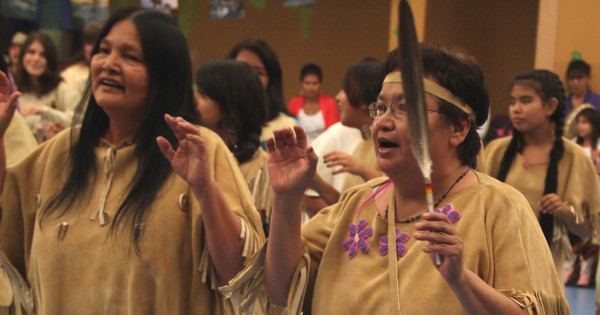Tsal’alhmec, known as “People of the Lake,” (Seton Lake Indian band) became the first Blue Indigenous Community this week. Tsal’alh adopted a resolution with the three criteria needed to become a Blue Community: recognizing of the human right to water, banning bottled water at community facilities and events and promoting public water services.
Tsal’alh has joined the 15 Blue Communities in Canada and three international Blue Communities, in Switzerland and Brazil, that are taking action to ensure the human right to water is respected.
It’s been nearly five years since countries in the UN General Assembly overwhelmingly voted to recognize the human right to water and sanitation. Canada was one of the few countries that failed to support this historic move. Though Canada has since expressed its support, the federal government has yet to give life to its endorsement of the human right to water and sanitation.
The lack of clean, drinking water in First Nation communities is one of the shameful violations of human rights in Canada. In one of the richest countries in the world, it is incomprehensible why people are going without safe, clean drinking water.
As of November, there were 127 First Nation communities under water advisory, with 27 communities in British Columbia alone. At any given time, there are over 100 indigenous communities under water advisories, some without clean drinking water for a shocking five, 10 or 15 years.
The Harper and Clark governments are also increasing the threats to water in indigenous communities in B.C. by gutting much need environmental safeguards and greasing the wheels for industry to push through pipeline, fracking and other fossil fuel projects.
The Blue Community resolution passed by Tsal’alh recognizes that bottled water is often used as a band-aid solution to reliable sources of clean, safe drinking water.
$4.7 billion is needed to secure the human right to water and sanitation for First Nation communities. This was based on a national assessment commissioned by the federal government that found that 73 per cent of the water systems in First Nation communities are at medium to high risk.
The Blue Communities resolution also points out that the Safe Drinking Water for First Nations Act creates necessary, high standards for drinking water but fails to allocate adequate funding and was passed without free, prior and informed consent of indigenous communities.
The act creates conditions where indigenous communities must turn to the Conservative government’s P3 Canada Fund, which only offers up funding conditional on communities entering into costly and risky public-private partnerships — something that Blue Communities expressly reject.
Liberal Party Leader Justin Trudeau recently gave a speech to the Canadian Council for Public-Private Partnerships where he promoted P3s as a solution to infrastructure needs including in First Nation communities. If the Liberals and New Democratic Party are serious about building a nation-to-nation relationship with Indigenous communities, they’ll do away with the paternalistic P3 Canada Fund.
Despite the lack of commitment at the federal level, communities like Tsal’alh are paving the way to a new relationship with water, how it is governed and how it is managed. It is in communities like this where we can place our hope that water will be cherished for generations to come.
Image: Flickr/bcgovphotos



